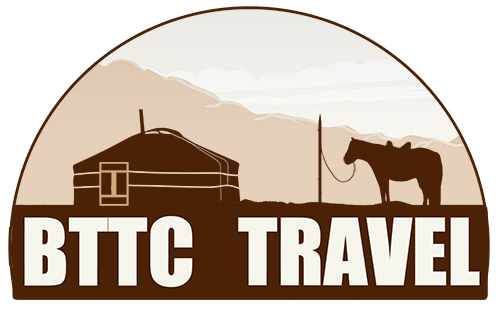Before you visit MONGOLIA
Accessibility
Weather/ Best time to travel
Visa information
Vaccination
Mongolian embassies abroad
While you are in MONGOLIA
Mongolia’s extreme climate has shaped a unique culinary tradition that reflects the resilience and resourcefulness of its people. During harsh winters, Mongolians rely on hearty, protein-rich foods, with meats like mutton, beef, and even horsemeat providing essential energy. In summer, they shift to a lighter diet based on dairy products, known as “White Food,” to cleanse and balance the body. These include milk, yogurt, aaruul (dried curd), Mongolian butter, urum (a thick cream), and other dairy delights, each symbolizing purity and kindness.
Airag – a traditional drink made from fermented mare’s milk, is a symbol of hospitality and celebration in Mongolia. Produced in summer, the milk is churned thousands of times in a leather bag until it reaches a mild, tangy flavor and a low alcohol content. This beloved drink is central to events like the Naadam festival, weddings, and New Year celebrations. Known for its health benefits, Airag is believed to strengthen the body and aid digestion. If you’re visiting a Mongolian family, expect to be offered a bowl of Airag—a sip or two is customary if you’re unfamiliar with the taste.
Boodog (Mongolian Barbecue) is a unique barbecue method, often made with marmot or goat. The animal is skinned and cleaned, with hot stones placed inside the body cavity to cook the meat from within. This method results in tender, flavorful meat infused with the aroma of hot stones. Boodog is a staple at gatherings and a must-try for adventurous eaters!
Khorkhog– Another iconic dish, Khorkhog is prepared by placing cuts of mutton or goat, along with hot stones, inside a container to cook the meat. The stones retain heat, evenly cooking the meat and adding a smoky flavor. Khorkhog, initially used by Mongolian soldiers on campaigns, is now a favorite at family gatherings, usually prepared by men in traditional cooking styles.
Milk Tea -A staple in Mongolian households, milk tea is prepared with brick tea, milk (from cows, camels, or sheep), salt, and sometimes rice or dumplings for added heartiness. Mongolians drink this salty tea several times a day, with elders often consuming 1-3 liters daily. Considered a comfort drink, it’s also used in traditional medicine to soothe colds and fatigue.
Mongolian vodka – Mongolian families have passed down the art of vodka-making for generations. Traditional arkhi is made from cow’s milk, using a unique distillation process that produces a pure and smooth drink. In Mongolian culture, it’s customary to pour the first few drops into the fire as an offering, and the quality of the vodka is judged by the clarity of its blue flame.
Borts – Mongolia’s nomadic way of life calls for practical food preservation methods, like air-drying meat. The strips of beef are dried until hard and then powdered for easy transport. When needed, a handful is added to boiling water for a nourishing broth—a simple, hearty meal that has sustained herders for centuries.
From Airag to Arkhi, Mongolia’s culinary traditions reflect the strength and warmth of its culture. A taste of Mongolia is an invitation to explore its rich history, distinctive customs, and the hospitality that defines this extraordinary land.
